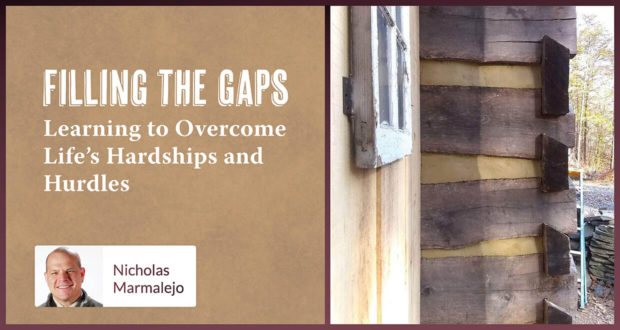Summary
A great benefit of homeschooling is that instruction can be tailored to a student’s strength and learning style to find their niche of genius or creativity.Recently, I had the good fortune to take a workshop on traditional Appalachian log cabin building. Not only was it a refreshing change of pace from strict academics, but it was also fun and exciting to do something entirely new.
One of the tasks at hand was to fill in the long spaces between the cabin logs. This process is typically called “chinking” or “daubing.” For many, it is the most intimidating and perplexing part of building an old-style log cabin. The reason is that the process is exceedingly tedious and fussy.
Craftsmanship needs to be precise and correct, or else water will sneak its way into the structure and eventually rot out the cabin’s logs over time.
When arriving on-site, I noticed that the other participants were palpably nervous. A mixture of excitement and fear floated in and out of their expressions. Feeling similarly about my own abilities, I began to joke with the teacher that I couldn’t wait to get started and begin ruining his fine cabin.
Everyone laughed, but that was indeed my worst fear. I think we all felt that way. At least the truth was out there, I thought. Now that the teacher knew what he was in for, we could begin in earnest.
After demonstration and instruction, the students took their places and proceeded to give chinking a try, generating a buzz of activity around the worksite. I had a bit of a rough start at first. Yet it was not too long before the others and I grew in confidence and ability, and a shift occurred among the group.
The tone of the conversation between students became happy, jocular, and optimistic, rather than vexed and worried. By the last quarter of the day, everyone was “in the groove” and a hum of production and learning could be seen and felt among the students.
It was encouraging, and even the instructor commented that he could feel the wheels in our minds turning.
Staying the Course
While I enjoy talking about cabins, I provide this workday example to illustrate several things about the process of learning.
First, it’s not unusual to be intimidated when doing something new, even before you start. When it comes to academic work, it is also not uncommon for students to feel demoralized or apprehensive, regardless of their skill level or station. Boredom with specific subjects, lack of relevance, or apathy can be typical causes.
Others may indeed care about their courses, but become discouraged when the task is either overwhelming or so daunting that success seems impossible.
Perhaps it’s none of those things—maybe it’s just the feeling that there’s an impending adventure to be had and we need to go to Mordor right now to set things aright.
Whatever the circumstance may be, we must learn to walk before we can run. Certain classes, at a minimum, must still be taken, and the obligation to complete classwork applies even to those students who feel that they were not born for academics.
Students who find themselves frustrated and scraping by, hitting only Bs and not As, or not achieving their higher academic targets, should not give up the ship. No one student is identical to any other, and learning takes time.
Setbacks are a part of the process of learning, whether it’s chinking a log cabin or mastering the sequence of calculations in Algebra.
The Sweet Spot
All learners are at their own specific stage in learning. An additional lesson I took from the log cabin workshop is that sometimes you just need to get started and get moving to figure out what must be done.
In my case, I began by making several mistakes, but once I accepted those efforts as problematic, I began asking myself “What am I doing wrong?” I made a few intelligent guesses, changed my approach, and soon things really started to flow along naturally.
The most enjoyable part of learning is arguably that moment we realize we’re “in the groove,” we arrive at a place where absorbing and learning is exciting and effortless. That is the “sweet spot” in education, even though there may have been demoralization, fear, or apathy at first.
Staying in the groove does not always last a long time, but such moments are important landmarks in our growth in knowledge and skill.
One of the great benefits of homeschooling is that instruction can be tailored to a student’s learning style and preferences. Some students still need to find their unique point of departure, that niche of genius or creativity that belongs particularly to them.
Nurturing the discovery of that potential over the years is critical, as it provides strength and encouragement to overcome the hurdles and hardships in life, both academic and otherwise. At Seton, we take that task seriously and are here to assist you with academic struggles.
Whether you are a student or a parent, if you find yourself overwhelmed, please contact us. Your success is our success, and Seton’s staff is here to help you fill in the gaps.

 Seton Magazine Catholic Homeschool Articles, Advice & Resources
Seton Magazine Catholic Homeschool Articles, Advice & Resources











































